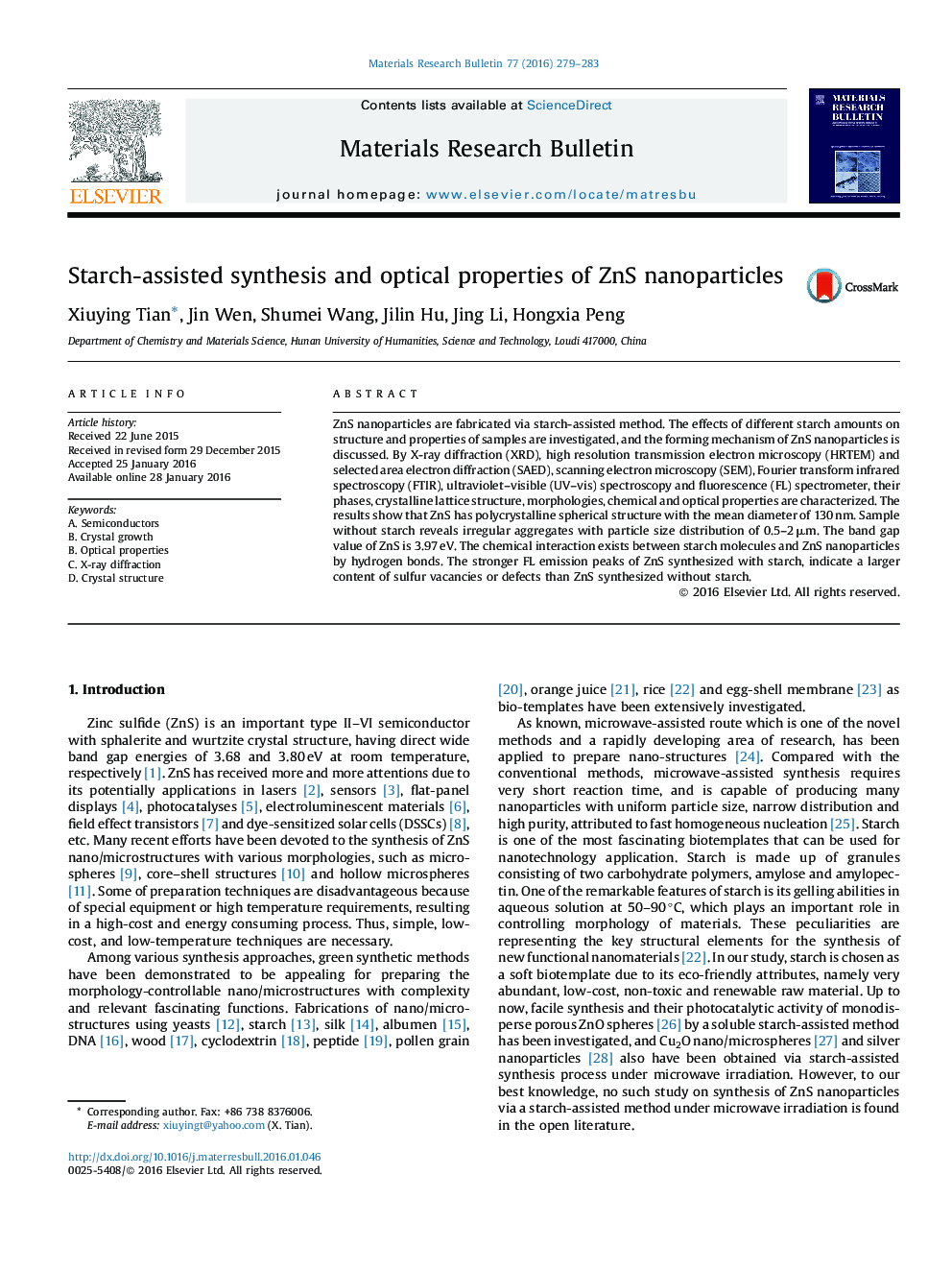| Article ID | Journal | Published Year | Pages | File Type |
|---|---|---|---|---|
| 1487455 | Materials Research Bulletin | 2016 | 5 Pages |
•ZnS spherical nanostructure was prepared via starch-assisted method.•The crystalline lattice structure, morphologies, chemical and optical properties of ZnS nanoparticles.•The forming mechanism of ZnS nanoparticles.•ZnS spherical nano-structure can show blue emission at 460–500 nm.
ZnS nanoparticles are fabricated via starch-assisted method. The effects of different starch amounts on structure and properties of samples are investigated, and the forming mechanism of ZnS nanoparticles is discussed. By X-ray diffraction (XRD), high resolution transmission electron microscopy (HRTEM) and selected area electron diffraction (SAED), scanning electron microscopy (SEM), Fourier transform infrared spectroscopy (FTIR), ultraviolet–visible (UV–vis) spectroscopy and fluorescence (FL) spectrometer, their phases, crystalline lattice structure, morphologies, chemical and optical properties are characterized. The results show that ZnS has polycrystalline spherical structure with the mean diameter of 130 nm. Sample without starch reveals irregular aggregates with particle size distribution of 0.5–2 μm. The band gap value of ZnS is 3.97 eV. The chemical interaction exists between starch molecules and ZnS nanoparticles by hydrogen bonds. The stronger FL emission peaks of ZnS synthesized with starch, indicate a larger content of sulfur vacancies or defects than ZnS synthesized without starch.
Graphical abstractFigure optionsDownload full-size imageDownload as PowerPoint slide
